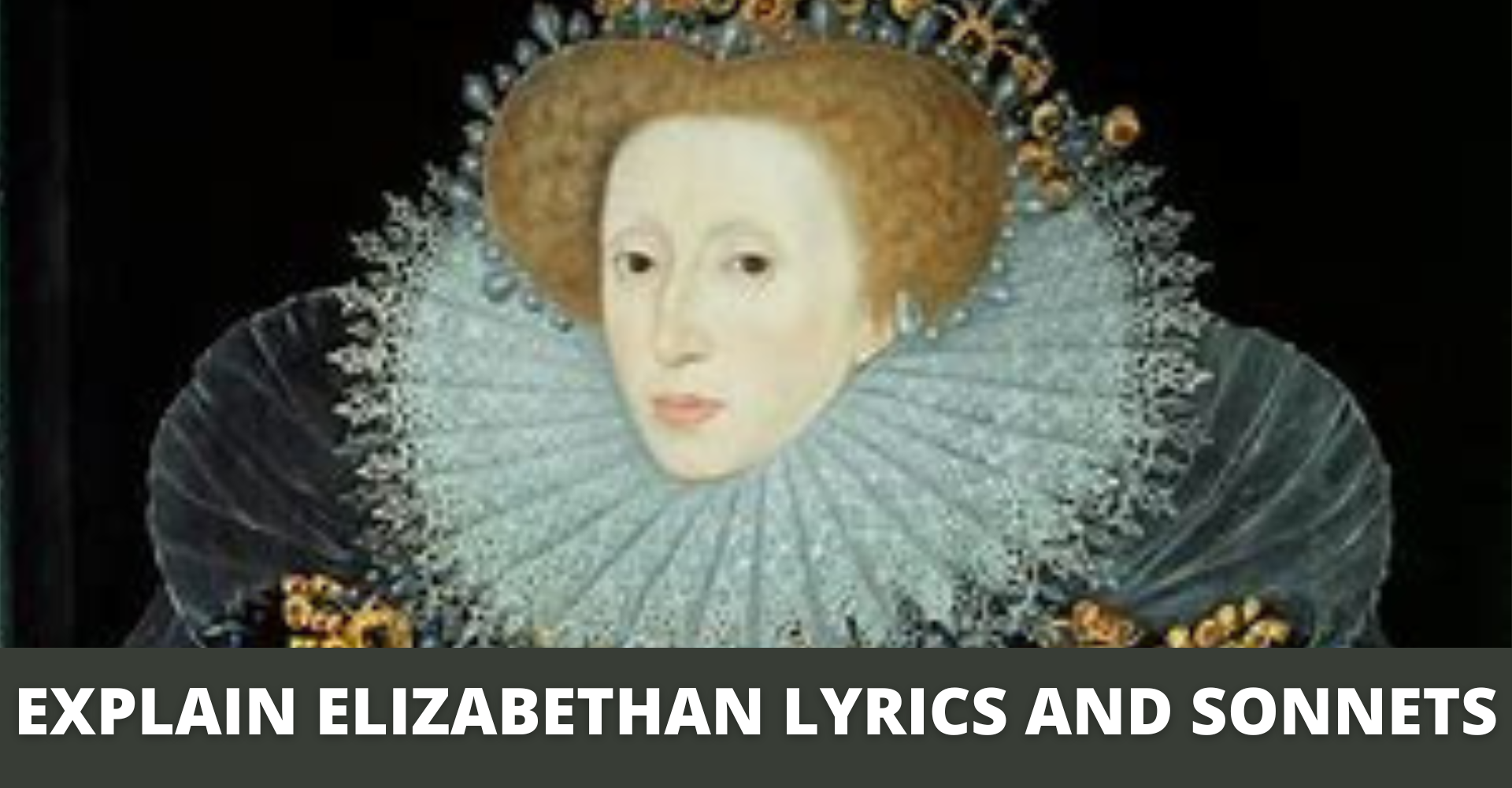Next to drama, lyrics and sonnets where perhaps the most popular literary product of the Elizabethan age. Lyrical verse continued to be return throughout the period. It is also found scattered through the romances of Greene , Lodge and other University wits. It is found in the place of Shakespeare, Flecter, Webstor, Ben Johnson.
To the principle collection of purely lyric verse published in the Elizabethan age are the miscellaneous and the song book. A hand full of pleasant dittes appeared in 1784. It was followed by Bower of Delitets in 1552, Phoenix Nest in 1553. Passionate Pilgrim in 1593, England’s Helicon in 1600. These collections contained the poems of Lodge, Peele Sir Walter Raleigh, Draton, Breton, Campion and others. They represented the popular taste. In them we find much of the finest Elizabethan lyrics.
Its characteristic from Elizabethan lyric is marked by extreme lightness and superb melody. Elizabethan poetry has rightly been called a nest of singing bird. Elizabethan lyric displays conventionality’ theme and unfailing vivacity. Its most remarkable feature is, ‘however, is objective realism, its ‘impersonal’ character. The love is commonly represented as a shepherd. The generalizes on the folly or the pain or the idolatry of love in vain shall we search for personal passion or the intensity of distinct individual experience in the lyric of Lodge, Greene or Marlowe.
The work of at last two great Elizabethan lyricists- Donne and Ben Johnson stands out as markedly different from that of their contemporaries. Donne was a metaphysical poet. He was an innovator. He added the element of logical reasoning to his lyrics. Ben Johnson’s lyrics were more neat and regular than those of early Elizabethan poets.
Spenser was another great lyrics genius of the Elizabethan age. Though he wrote different kinds of poems, the element of lyrical quality can be found everywhere. ‘The shepherd’s calendar’ is a pastoral poem which contains a series of songs. ‘Epithalamion’ and ‘Prothalamion’ or beautiful odes.
Sonneteering was another favorite pastime for Elizabethan poets. It was a very highly successful experiment introduced by the Italian Petrarch Elizabethan poets used the sonnet form dealing with love themes. To Hel’s Miscellany was their joint venture which come out in 1559. It is a collection of love lyrics. Wyatt and Surrey wrote both lyrics and sonnets. Wyatt’s sonnets are crude irregular as they fail to keep accent.
Most of the Elizabethan poets wrote sonnets in group; or sequences. The most important among the sonnet sequences of the period are Sir Philip Sydney’s Astrophel and Stella, Spenser’s Amoretti, Danlel’s Dalial constable’s Diania and Wastons Tears of fancy. Shakespeare also wrote a series more than 150 sonnets. Throughout the Elizabethan age poets limited Petrarchan moods of love and used the sonnet form to express them. Shakespeare stuck a note of originality by discarding the Petrarchan model and introducing a new sonnet ‘bora’. The form of sonnet which he initiated is known as ‘Shakespearean sonnets‘.
Thus the lyrics and sonnets were the components of Elizabethan poetry. We come across in them that music and magic of phrase, that felicity of expression which is the distinguishing remark of Elizabethan poets very often welcome across marvelous quibbles and conceits in them as in the sonnets of Shakespeare.
Shakespeare wrote ‘Venus and Adonis’ in 1593 and The Rape of Lucrece’ in 1594. The ancient story of ‘Venus and Adonis’ is practically changed into the story of a woman skilled at loving and Elizabethan young man. In the second poem he gives us the story of a chase wife being raped by a debauchee. Shakespeare in these poems given expression to his poetical skill, his control over English vocabulary and his great pictorial quality.
Marlowe wrote ‘Hero and Leander’. But Marlowe could not finish his poem in his lifetime. The poem was published by Chapman. The love story of Hero and Lender was first written by Musaeus a Greek poet of the 5th century. It is one of the most sensuous stories of ancient days. The poem shows the physical beauty of Hero and Leander. The poem breathes the spirit of Pagan beauty.











